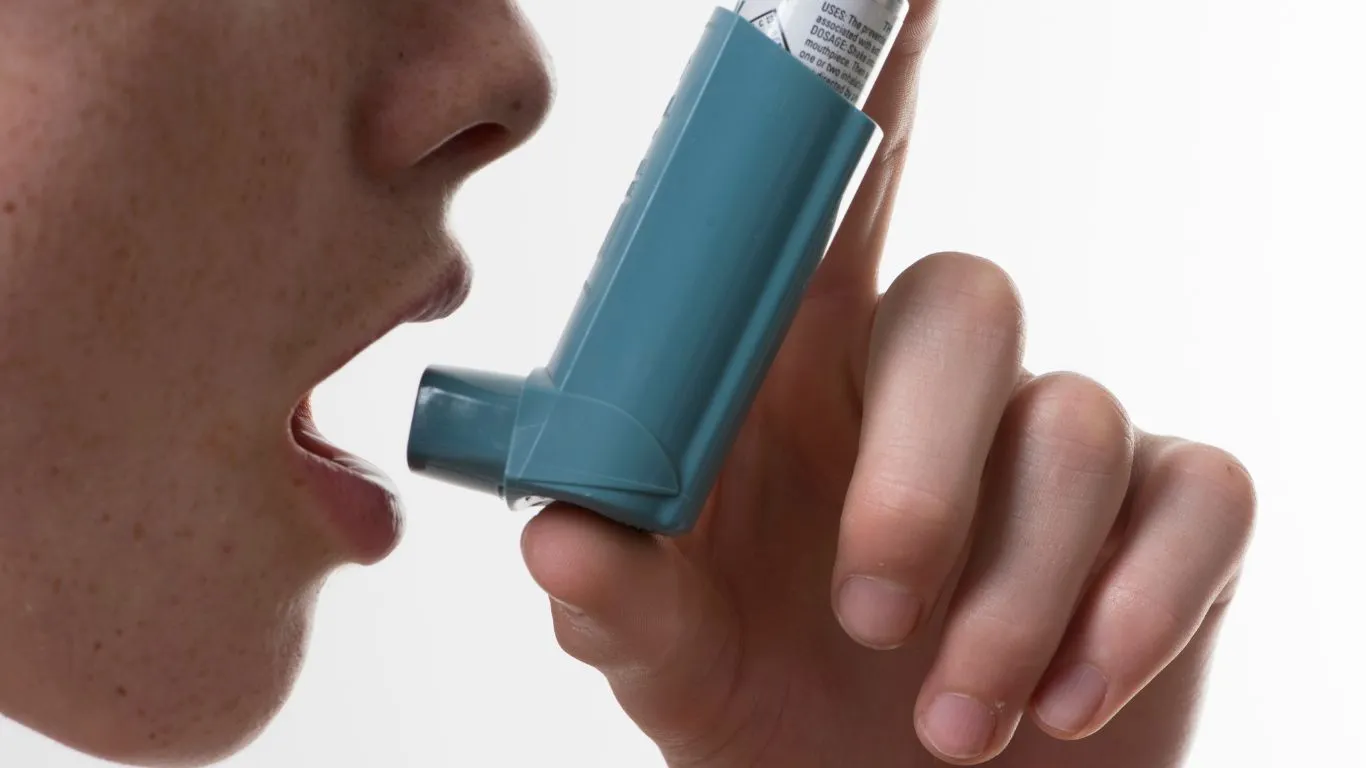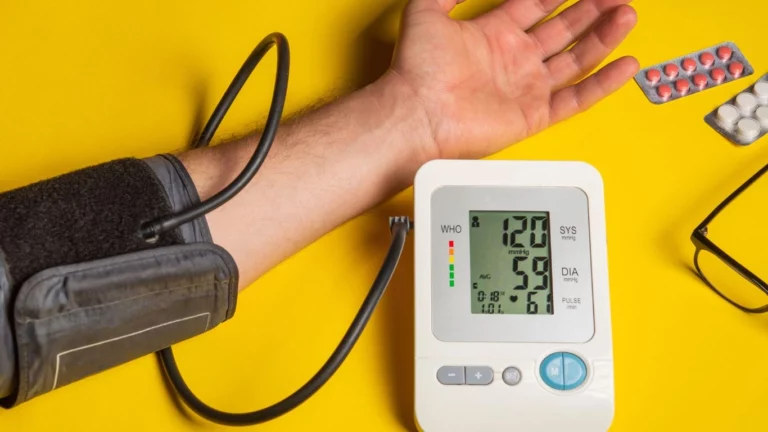Powerful Asthma Tips for First-Time Sufferers to Breathe Easier Today
If you’re dealing with asthma for the first time, let me just say: you’re not alone, and you’re not crazy for feeling a little overwhelmed. When I first started working as a pulmonary nurse practitioner, I met so many patients who had the same wide-eyed expression the moment they were diagnosed. That sudden fear of “What now?” hits hard. So, I wanted to create this honest, practical guide packed with asthma tips for first-time sufferers — not just textbook advice, but real-life insights that can actually help you breathe easier (literally and figuratively).
Understanding What Asthma Really Feels Like

You’re Not Being Dramatic — Asthma Can Be Scary
Let’s just clear this up: that tight feeling in your chest, the sudden coughing fits, the wheezing, the shortness of breath — they’re not in your head. Asthma is a chronic condition where your airways swell up and narrow, making it tough to breathe. And when you’re new to all this, every little symptom feels like a red flag. I remember one patient telling me, “I didn’t know if I was having a panic attack or if I needed to call 911.” That’s a real and valid fear.
Learn the Triggers Before They Surprise You
One of the first things I tell patients: your asthma isn’t just about what’s going on inside your lungs — it’s about what’s going on around you. From scented candles to cold air to your neighbor’s cat, asthma triggers are sneakier than you’d think. And here’s the thing — triggers are super personal. What affects one person might not bother another at all.
Some common triggers to watch for:
- Dust mites (especially in bedding and carpets)
- Strong odors like perfumes or cleaning products
- Smoke (tobacco, incense, fireplaces — all of it)
- Pollen and other allergens
- Cold or dry air
- Exercise without proper warm-up
Pro tip from the clinic: Start a “trigger journal.” Every time you have symptoms, jot down where you were, what you were doing, what you smelled — anything that stands out. It’s low-tech but ridiculously effective.
Mastering the Meds: Inhalers, Spacers & What No One Tells You

The Difference Between Rescue and Maintenance Inhalers
I can’t tell you how many new patients mix these up — and honestly, it’s not their fault. The names sound confusing, and no one explains them properly half the time.
- Rescue inhaler (like albuterol): This is your emergency buddy. Use it when you’re wheezing, coughing, or feel an attack coming on. Works fast, but short-lived.
- Maintenance inhaler (like fluticasone or budesonide): This is your daily, long-term support. You take it even when you feel fine to prevent flare-ups.
Spacers make a difference, especially for newbies. If you’ve ever used your inhaler and felt like half of it didn’t even go in your lungs — that’s exactly what a spacer helps with. It holds the medication so you can breathe it in more effectively. Way easier, and yes, it matters.
A Real Talk Moment About Side Effects
One thing I always tell patients: rinse your mouth after your steroid inhaler. Steroid residue can lead to oral thrush, which is basically a yeast infection in your mouth (not fun). I’ve had patients come back freaking out about white patches in their throat, and a simple rinse-and-spit routine could have saved them the trouble.
Making Your Home Asthma-Safe Without Going Overboard

Small Changes That Make a Big Impact
People always think they have to turn their home into a sterile lab environment — not true. With a few smart moves, you can breathe easier without stripping all the joy out of your space.
- Use allergen-proof covers on pillows and mattresses
- Vacuum regularly using a HEPA filter
- Wash bedding in hot water weekly
- Keep pets out of the bedroom (I know, I know… it’s hard)
- Switch to unscented cleaning products
And if you’re wondering whether air purifiers work — yes, if you get a decent one with a HEPA filter. Don’t waste money on gimmicky “ionizer” types that sound cool but don’t actually help with asthma triggers.
Pro Tips from the Clinic
I once had a patient who was reacting to her lovely new shag rug — turns out, it was a dust mite party underneath. She swapped it out for a low-pile version and saw results in days. Another used fabric softeners with a strong scent — asthma trigger city. It’s often the little things that add up.
Building Your Support System: You Don’t Have to Do This Alone
Here’s something that gets overlooked way too often: having asthma can feel isolating, especially when you’re the only one in your circle dealing with it. You might feel like you’re being dramatic or a burden when you speak up. I’ve had patients hesitate to carry their inhaler at a wedding because it “ruins the outfit.” (Spoiler alert: not breathing ruins everything more.)
Tell People What You Need — Seriously
Your friends, family, even coworkers — they can’t help if they don’t know what’s going on. It doesn’t have to be a big dramatic speech. Just something like, “Hey, I have asthma, and certain smells can set it off. If we hang out, can we sit outside if someone’s smoking?” That one small ask can prevent a trip to the ER.
How to Handle an Asthma Flare-Up Without Freaking Out

First Rule: Don’t Panic (Easier Said Than Done, I Know)
When that chest tightness starts creeping in, your breath gets shallow, and your thoughts start racing… yep, that’s the scary moment every new asthma patient dreads. I’ve been in the room with countless patients in that exact state. And let me tell you, panic makes everything worse. Your airways are already inflamed — adding anxiety just compounds the issue.
Here’s what I teach my patients to do during a flare-up:
- Stop what you’re doing. Whether you’re cleaning, walking, or even talking — pause immediately.
- Use your rescue inhaler. Two puffs, 30 seconds apart. Make sure you shake it first. And yes, a spacer makes it more effective.
- Sit upright. Posture can make a big difference. Sit tall, open your chest, and try to slow your breathing.
- Try “smell the flower, blow the candle.” This simple breathing trick (slow inhale through the nose, gentle exhale through the mouth) really does help reduce that panicky feeling.
And here’s my personal golden rule: If you’re not improving after 15-20 minutes, call for help. Don’t wait until you’re in full distress. Better safe than struggling to speak or breathe.
Know the Red Flags
Some symptoms just shouldn’t be ignored. If you’re experiencing any of these, it’s time to seek medical care ASAP:
- Lips or fingernails turning blue or gray
- Severe chest tightness that doesn’t go away
- Can’t talk in full sentences without gasping
- No relief even after using a rescue inhaler
It’s not overreacting — it’s being smart. I’ve seen too many patients brush it off and end up needing hospitalization. Don’t be a hero. Be safe.
Getting in Tune With Your Body: Early Warning Signs Matter

Your Body Will Warn You — If You’re Paying Attention
One of the most useful asthma tips for first-time sufferers is learning how to notice the early signs of a flare. You don’t always go from “fine” to “full-blown attack” in minutes. Often, your body throws out clues — subtle ones — but they’re there.
Here are a few early warning signs many of my patients report:
- Frequent throat clearing or coughing — especially at night
- Feeling winded after normal activity
- Chest feeling “itchy” or tight, but not painful
- Unusual fatigue or difficulty sleeping
I had a college student patient who thought her asthma was under control — until she noticed she was coughing during lectures and waking up wheezing. We adjusted her meds and put her on a peak flow meter schedule, and her nighttime symptoms improved within days. Which brings me to…
Peak Flow Meters: Your New Best Friend
It’s not the flashiest tool in the world, but a peak flow meter gives you actual numbers to track how well your lungs are working. Think of it as a weather forecast for your lungs — if the numbers start trending down, that’s your sign to take action before symptoms hit.
Tips to use it right:
- Use it at the same time every morning — before meds
- Blow hard and fast, like you’re trying to blow out a candle across the room
- Record your numbers and look for patterns
Don’t stress about being perfect — just be consistent. Over time, you’ll start seeing your “normal” range and recognize when something’s off.
Traveling With Asthma: Don’t Leave Your Lungs Behind

Yes, You Can Travel — Just Plan Ahead
Asthma doesn’t mean you’re stuck at home. I’ve worked with patients who hiked in Colorado, flew to Bali, even ran marathons — all with well-managed asthma. But the key is being prepared.
Before you go:
- Bring extra medication. Always pack more than you think you’ll need. Inhalers, spacers, allergy meds — all of it.
- Keep meds in your carry-on. Lost luggage happens. Your lungs shouldn’t suffer for it.
- Know local medical care options. Just in case. Especially important if traveling internationally.
- Check air quality reports. Some cities have high pollution or pollen counts — plan accordingly.
And if you’re flying, keep in mind that dry cabin air can be a trigger. Bring a scarf or mask to cover your nose and mouth, and sip water frequently. One of my patients swore by saline nasal spray during long flights — and honestly, it helped her a ton.
Let People Around You Know
When you’re away from home, it’s even more important to make your condition known. If you’re traveling with friends or coworkers, give them a quick heads-up about where your meds are and what to do if something happens. You don’t need a laminated emergency plan (unless you want one, of course) — just simple, clear communication goes a long way.
I had a patient who brought a tiny card in her wallet listing her asthma action plan. She felt more confident and in control — and that peace of mind alone made her symptoms feel more manageable. Preparedness reduces fear, and that’s a win.
Creating a Daily Routine That Works for You (and Your Lungs)

Why Routine Really Does Matter
One thing I’ve noticed over the years? The patients who do best with asthma aren’t necessarily the ones with the most medications — they’re the ones with the most consistent routines. And no, I’m not saying you need to turn into a rigid robot. But building a rhythm into your day gives your lungs a fighting chance.
Here’s what a solid daily routine might include:
- Morning: Use maintenance inhaler, check peak flow, do a gentle warm-up or stretch
- Afternoon: Stay hydrated, avoid dusty environments or known triggers
- Evening: Rinse after meds, clean up allergens (pet hair, dander), and prep for a restful sleep
One of my patients set reminders on her phone labeled “Lungs love you 🫁” just to keep her on track — and you know what? It worked! Small stuff like that makes a huge difference.
Don’t Underestimate the Power of Sleep
Sleep and asthma have a complicated relationship. Poor sleep can make asthma worse, and uncontrolled asthma can wreck your sleep. Vicious cycle, right?
Some nighttime-friendly tips:
- Prop your head up with an extra pillow — gravity helps
- Use a humidifier if your air is dry, but clean it regularly
- Keep your bedroom a trigger-free zone — no pets, no fragrances
Personally, I like to recommend winding down with a calming tea (chamomile or ginger), journaling, and putting electronics away. You’d be surprised how much better you breathe when your nervous system chills out.
Nutrition, Exercise & Lifestyle Tweaks That Actually Help

Food Isn’t a Cure — But It Can Be Fuel
Let’s be clear: there’s no miracle “asthma diet.” But some foods can support your immune system, reduce inflammation, and help your body fight triggers more effectively. I always recommend focusing on anti-inflammatory choices.
Great food picks include:
- Leafy greens (spinach, kale)
- Fatty fish (like salmon — omega-3s are your friend)
- Fruits rich in antioxidants (berries, apples, citrus)
- Turmeric and ginger (natural anti-inflammatory boosters)
And hey — don’t stress about being perfect. It’s not about going vegan overnight. It’s about making smart swaps that support your overall health, which in turn supports your lungs.
Yes, You Can Still Exercise — And You Should
This might surprise some people, but exercise is actually one of the most effective long-term asthma management tools — when done right. Movement helps strengthen your respiratory muscles and improves overall lung capacity. The trick is learning how to pace yourself and warm up properly.
Tips I give my active patients:
- Always do a slow warm-up and cool-down
- Use your rescue inhaler 15 minutes before if prescribed
- Start with low-impact exercises like walking, yoga, swimming
- Choose indoor workouts on high pollen days
One of my favorite stories? I had a teen patient who loved soccer but was terrified of having an asthma attack on the field. We worked together to create a pre-game inhaler plan, and by the next season, she was back to playing full games — confident and symptom-free.
Your Long-Term Game Plan: It’s a Marathon, Not a Sprint
Build a Relationship With Your Healthcare Team
This might sound obvious, but your relationship with your care team matters. I always encourage my patients to ask questions, no matter how small. You’re not being “needy” — you’re being smart.
Things to regularly discuss with your provider:
- Any changes in symptoms — even minor ones
- Side effects or struggles with meds
- When to step up or step down treatment
- Seasonal flare plans (fall and spring are big culprits!)
Keeping a shared action plan — in writing — is a game changer. If your provider hasn’t given you one, ask for it. It’s your roadmap, and it should be reviewed at least once a year.
Stay Updated, Stay Empowered
Asthma research and treatment options evolve. That’s why I recommend staying up to date with reliable sources. Follow organizations like the NIH or Health for the latest evidence-based updates, tips, and patient stories. Knowledge really is power — especially when it comes to managing chronic conditions.
I also tell people: don’t underestimate the value of support groups. Online forums, local meet-ups, or even following asthma advocates on social media can make you feel more connected and less alone in all this.
References
- National Institutes of Health (NIH)
- Health.com
- Centers for Disease Control and Prevention (CDC)
- American Lung Association
Disclaimer
This content is intended for educational purposes only and is not a substitute for professional medical advice, diagnosis, or treatment. Always consult your physician or a qualified healthcare provider regarding your individual condition. As a pulmonary nurse practitioner, I offer insights based on clinical experience, but this article should not replace personalized medical guidance.

Bianca Nala is a compassionate Nurse Practitioner with a strong background in primary and respiratory care. As a health writer for Healthusias.com, she combines her clinical expertise with a talent for clear, relatable storytelling to help readers better understand their health. Bianca focuses on topics like asthma, COPD, chronic cough, and overall lung health, aiming to simplify complex medical topics without losing accuracy. Whether she’s treating patients or writing articles, Bianca is driven by a single goal: making quality healthcare knowledge accessible to everyone.





